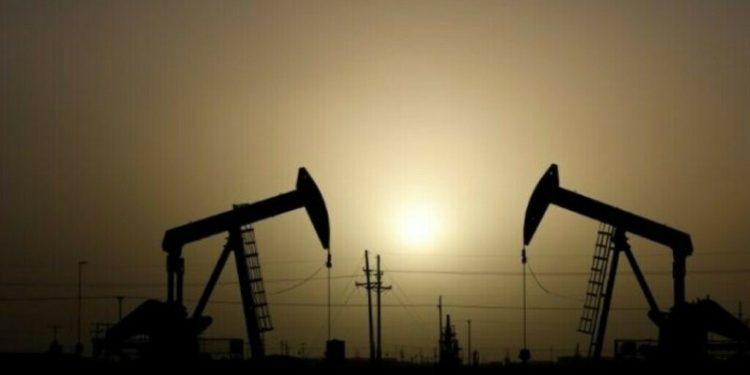LONDON: Oil prices were on track to end 2024 with a second consecutive year of losses, although they rose on the day on Tuesday after data showed China’s manufacturing activity expanded in December.
Brent crude futures rose by 54 cents, or 0.73%, to $74.53 a barrel as of 1107 GMT. U.S. West Texas Intermediate crude gained 57 cents, or 0.8%, to $71.56 a barrel.
At those levels, Brent was down around 3.3% from its final 2023 close price of $77.04, while WTI was little changed from where it settled on Dec. 29 last year at $71.65.
In September, Brent futures closed below $70 a barrel for the first time since December 2021, while their highest closing price of 2024 at $91.17 was also the lowest since 2021, as the impacts of a post-pandemic rebound in demand and price shocks from Russia’s 2022 invasion of Ukraine began to fade.
A weaker demand outlook in China in particular forced both the Organisation of Petroleum Exporting Countries (OPEC) and the International Energy Agency (IEA) to cut their oil demand growth expectations for 2024 and 2025.
Oil prices up on large draw from US crude stocks
With non-OPEC supply also set to rise, the IEA sees the oil market going into 2025 in a state of surplus, even after OPEC and its allies delayed their plan to start raising output until April 2025 against a backdrop of falling prices.
Investors will be also be watching the Federal Reserve’s rate cut outlook for 2025 after central bank policymakers earlier this month projected a slower path due to stubbornly high inflation.
Lower interest rates generally incentivise borrowing and fuel growth, which in turn is expected to boost oil demand.
Markets are also gearing up for U.S. President-elect Donald Trump’s policies around looser regulation, tax cuts, tariff hikes and tighter immigration that are expected to be both pro-growth and inflationary.
Investors will also be mulling the potential impacts on oil prices of Trump’s calls for an immediate ceasefire in the Russia-Ukraine war, as well as the possible re-imposition of the so-called “maximum pressure” policy towards Iran.
Oil prices ticked higher on Tuesday as China’s manufacturing activity expanded for a third straight month in December but at a slower pace, an official factory survey showed on Tuesday, suggesting a blitz of fresh stimulus is helping to support the world’s second-largest economy.
China also issued at least 152.49 million metric tons of crude oil import quotas in a second batch for 2025, several sources said on Monday, taking next year’s total to 158.33 million tons, down from 182.69 million tons in 2024.









